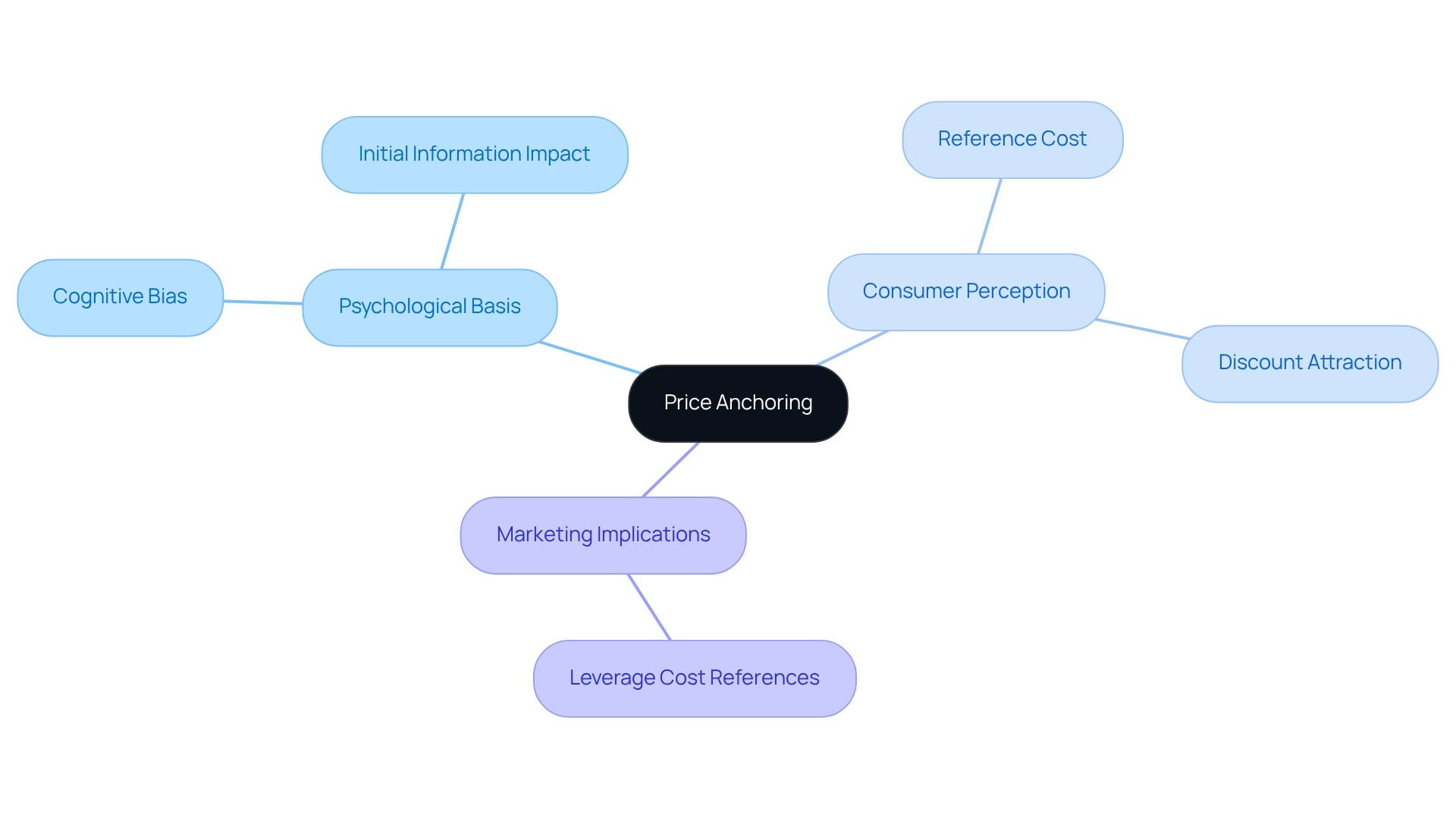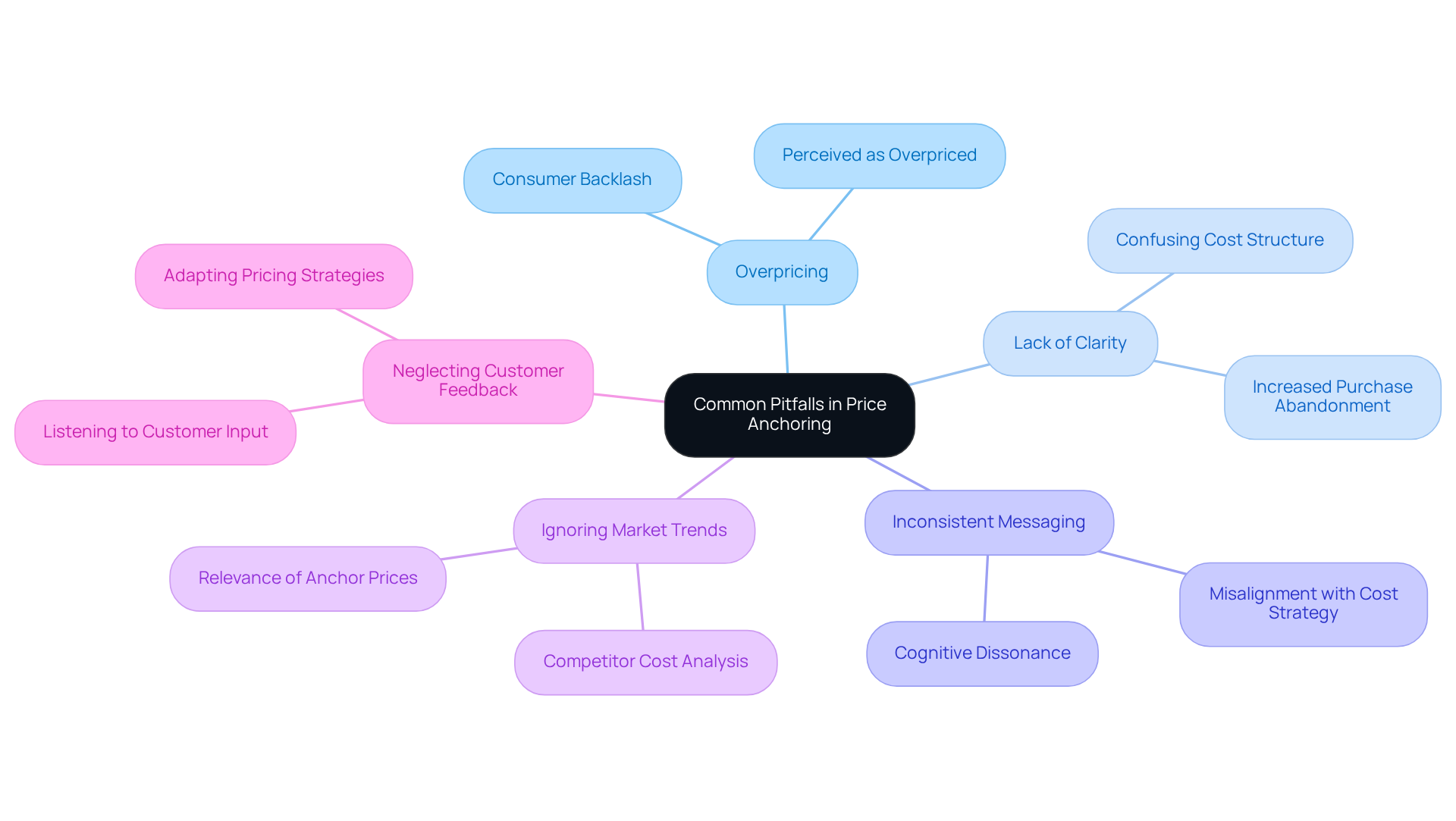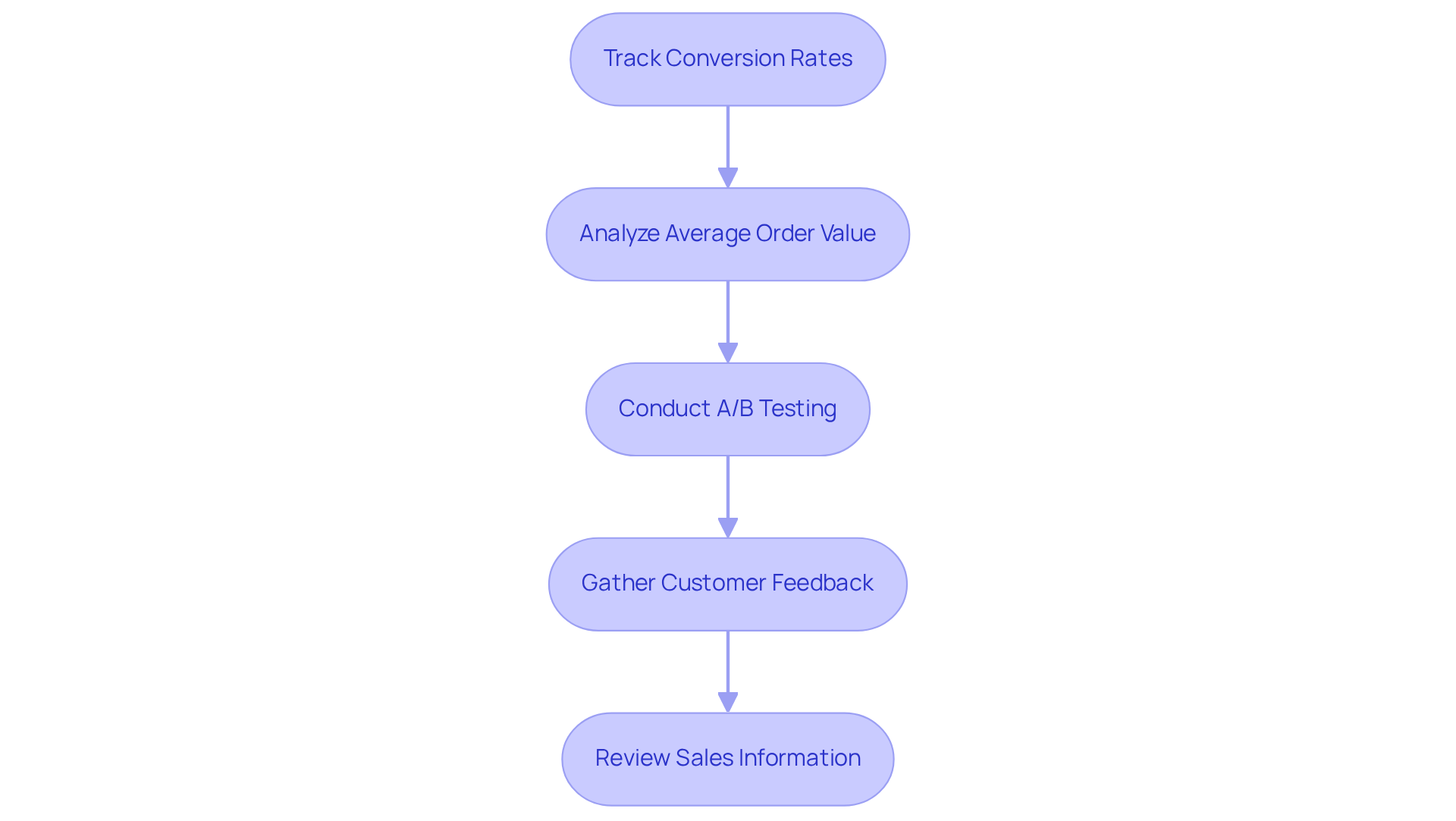
Overview
The article asserts the effectiveness of utilizing the price anchoring effect to drive revenue growth. By establishing a high initial price and implementing strategies such as:
- Comparative pricing
- Emphasizing discounts
- Creating urgency through time-limited offers
Businesses can significantly influence consumer perceptions. This approach not only enhances sales but is also backed by various examples and research findings that illustrate its impact. Such strategies are essential for businesses aiming to optimize their pricing tactics and ultimately drive profitability.
Introduction
The psychological phenomenon of price anchoring significantly influences consumer behavior and propels revenue growth for businesses. By establishing a reference price, sellers can effectively shape perceptions of value, making discounted offers appear more enticing. However, to successfully leverage this tactic, a nuanced understanding of its principles and potential pitfalls is essential.
What strategies can brands implement to harness the power of price anchoring while steering clear of common mistakes that could undermine their efforts?
Define Price Anchoring and Its Psychological Basis
The price anchoring effect serves as a powerful psychological pricing tactic, where sellers establish a reference cost—the 'anchor'—that consumers utilize to evaluate the worth of a product or service. This initial cost level significantly shapes customer perceptions of subsequent prices, illustrating the price anchoring effect that makes them more inclined to view a reduced rate as a superior offer.
The psychological foundation of this effect is rooted in cognitive bias, which indicates that individuals heavily rely on the first piece of information they encounter when making decisions. For example, when an item is initially priced at $100 and then offered at a discounted rate of $70, the price anchoring effect of the original price makes the reduced cost more attractive.
Understanding this principle is essential for effectively leveraging cost references in marketing strategies.

Implement Effective Price Anchoring Strategies
To effectively implement price anchoring, consider the following strategies:
-
Set a High Initial Price: Establish a higher reference price for your product to create a strong anchor. For instance, if a premium version of a product is priced at $150, offering a standard version at $100 makes the latter appear as a bargain, leveraging consumer psychology to enhance perceived value. Research shows that consumers often perceive paying $500 for 80% of features as a good deal compared to paying $1,000 for only 20% more features.
-
Utilize Comparative Costs: Show various cost options next to each other. For example, if you offer three tiers of a subscription service, prominently position the most expensive option. This approach makes the mid-tier option appear more sensible, directing consumers toward it as a preferred selection. Organifi, for instance, achieves a conversion rate of about 10% by effectively utilizing comparative pricing strategies on their sales pages.
-
Highlight Discounts: Clearly display the original cost alongside the reduced amount. This visual cue reinforces the anchor and enhances the perceived value of the deal. For example, presenting a product originally priced at $100 now available for $70 effectively communicates a significant saving, encouraging purchase decisions. As noted, every time you see a discount with "$100 $70", the $100 serves as the price anchor for the $70 sales price.
-
Leverage Bundling: Offer products in bundles at a perceived discount. For example, if a customer notices that acquiring three items collectively saves them $20 compared to buying them individually, the reference cost of the separate items increases the worth of the bundle, making it more appealing. This strategy can help eliminate slower-moving inventory and reduce dead stock.
-
Utilize Time-Limited Offers: Create urgency by offering discounts for a limited time. This tactic not only secures the initial cost but also promotes faster purchasing decisions. For example, a limited-time offer can prompt consumers to act swiftly, fearing they might miss out on a good deal. Emphasizing urgency can greatly increase the perceived worth of the reduced cost.
By employing these approaches, brands can effectively utilize the price anchoring effect to influence consumer perceptions and drive sales, ultimately enhancing profitability. Parah Group's comprehensive approach to Conversion Rate Optimization ensures that these cost structures are seamlessly integrated with your overall marketing efforts, maximizing your existing resources through rigorous testing, including A/B testing, and alignment of paid ads and landing pages. However, it is crucial to avoid common pitfalls such as appearing manipulative or neglecting customer value, as these can undermine trust and the effectiveness of your pricing strategies.

Navigate Common Pitfalls in Price Anchoring
While price anchoring serves as a powerful tool for driving sales, several common pitfalls must be meticulously avoided to ensure its effectiveness:
-
Overpricing: Setting the anchor figure excessively high can provoke consumer backlash, as shoppers may perceive the product as overpriced rather than a good bargain. To maintain consumer trust, it is crucial to establish an anchor price that is both realistic and justifiable, as this influences the price anchoring effect. For instance, a $30M clothing brand collaborated with Parah Group to enhance their revenue strategy, ultimately achieving a 10% rise in revenue per visitor.
-
Lack of Clarity: A confusing cost structure can frustrate customers, leading to increased purchase abandonment rates. Clear and concise presentation of prices is essential to facilitate informed decision-making. Parah Group's approaches, which include optimizing product costs and minimizing unnecessary pop-ups, have proven effective in improving clarity and driving conversions.
-
Inconsistent Messaging: Marketing messages must align with the cost strategy. When a product is positioned as a premium offering but priced too low, it can lead to a price anchoring effect that creates cognitive dissonance, ultimately undermining the perceived value. For example, Grab Green, a $15M cleaning product brand, effectively executed value propositions on larger items, highlighting the advantages of buying bundles, thereby aligning their messaging with costs.
-
Ignoring Market Trends: Failing to examine competitor costs and market conditions can lead to ineffective anchoring. Consistently assessing rival approaches ensures that your anchor prices remain pertinent and competitive, which illustrates the price anchoring effect. Parah Group emphasizes the significance of staying informed about market trends to enhance sales techniques efficiently.
-
Neglecting Customer Feedback: Actively listening to customer input regarding costs is vital. If buyers express uncertainty or discontent, be prepared to modify your cost approach to better align with their expectations. Parah Group's method involves customizing plans according to client requirements, ensuring that customer insights are integrated into the pricing process.
By identifying and addressing these challenges, brands can refine their pricing strategies, ultimately increasing their effectiveness and boosting revenue growth, as evidenced by the successful results obtained through Parah Group's innovative CRO approaches.

Evaluate the Impact of Price Anchoring on Revenue
To evaluate the impact of price anchoring on revenue, follow these essential steps:
-
Track Conversion Rates: Begin by observing variations in conversion rates before and after implementing cost reference strategies. A notable rise in conversions can indicate the effectiveness of your cost structure.
-
Analyze Average Order Value (AOV): Assess whether value anchoring has led to an increase in AOV. If customers are purchasing more items or selecting higher-priced options, this signals a positive outcome.
-
Conduct A/B Testing: Implement A/B tests to compare various strategies for setting prices. Analyzing the performance of different anchor prices will help identify which approach delivers the best results.
-
Gather Customer Feedback: Actively solicit opinions from customers regarding their perceptions of your pricing. Understanding how consumers view your cost strategy provides valuable insights into its effectiveness.
-
Review Sales Information: Regularly examine sales data to identify trends and patterns related to pricing. Look for correlations between pricing changes and fluctuations in revenue.
By systematically evaluating these metrics, brands can gain critical insights into the effectiveness of their price anchoring strategies and make informed adjustments to optimize revenue growth.

Conclusion
Harnessing the price anchoring effect can substantially amplify revenue growth by strategically shaping consumer perceptions of value. By establishing a reference price, businesses can adeptly guide customers toward making more favorable purchasing decisions, ultimately resulting in increased sales and profitability. A profound understanding of the psychological foundations of this tactic is essential for marketers seeking to leverage price anchoring effectively.
Throughout this discussion, various strategies for implementing price anchoring have been illuminated. From setting high initial prices and utilizing comparative costs to emphasizing discounts and leveraging bundling, each approach is meticulously crafted to enhance perceived value and drive consumer choices. Moreover, the significance of avoiding common pitfalls, such as overpricing and lack of clarity, is underscored to ensure these strategies build rather than erode consumer trust.
In conclusion, mastering the price anchoring effect transcends mere sales increases; it involves a comprehensive understanding of consumer behavior and the development of marketing strategies that resonate with buyers. By continuously evaluating the impact of these tactics on revenue and responding to market trends and customer feedback, brands can unlock the full potential of price anchoring, paving the way for sustained growth and success in a competitive marketplace. Embracing these insights has the power to transform pricing strategies and foster deeper connections with consumers, ultimately creating a win-win scenario for both businesses and their customers.
Frequently Asked Questions
What is price anchoring?
Price anchoring is a psychological pricing tactic where sellers establish a reference cost, known as the 'anchor,' which consumers use to evaluate the worth of a product or service.
How does price anchoring affect consumer perceptions?
Price anchoring shapes customer perceptions of subsequent prices, making them more inclined to view a reduced rate as a superior offer compared to the original price.
What is the psychological basis of price anchoring?
The psychological basis of price anchoring is rooted in cognitive bias, which suggests that individuals rely heavily on the first piece of information they encounter when making decisions.
Can you provide an example of price anchoring?
An example of price anchoring is when an item is initially priced at $100 and then offered at a discounted rate of $70. The original price serves as an anchor, making the reduced cost appear more attractive.
Why is understanding price anchoring important?
Understanding price anchoring is essential for effectively leveraging cost references in marketing strategies to influence consumer behavior.
FAQs











